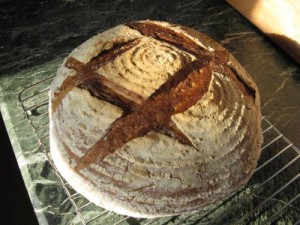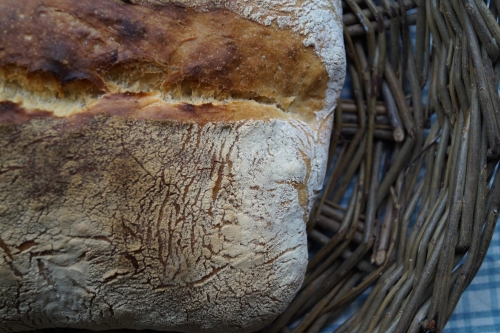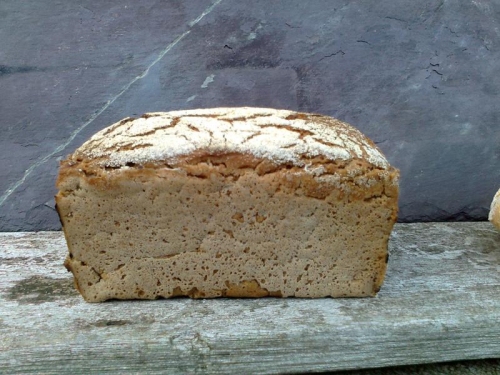I often get asked why Artisan Bread or Real Bread is more expensive. To understand why, you need to look at the baking process and that starts with the ingredients. The Real Bread Campaign champions bread made with 4 basic ingredients; flour, water, salt and yeast or a leven. That means no artificial ingredients – but that’s just the beginning of the story.

Some bakers and teachers of Artisan Bread champion bread made using a method called long fermentation and that includes myself. This includes both bread made with sourdough, and bread made with baker’s yeast. There are good reasons for using long fermentation in the dough preparation. It is through this process that the bread develops complex flavours associated with sour dough and artisan breads. Alongside this, the texture of the crumb, (the bit inside the crust) improves, becomes more substantial and yes, chewy. Above all, through long fermentation, the flour can become more nutritious and more digestible. This is good news for those who have cut bread out of their diet because digestive problems. From bread we can get many good things; protein and trace elements so important to our health.
So, what is long fermentation? It’s the metabolic process by which the dough is left for at least 6 hours to allow the yeasts to convert the carbohydrates in the flour into sugars, and then use these sugars for energy to grow and reproduce more yeasts. At the same time bacteria are also present and reproduce. This is a natural process that benefits us.

Sourdough breads takes a little more to get used to, but yeasted bread using long fermentation is relatively easy. It can fit into a busy day. This is how I teach bead making, not just because I think it’s easier, but because I believe it is better tasting and better for our health. It’s that simple.
My sourdough courses are a progression. Still using long fermentation you begin to understand how using a sourdough starter differs from baker’s yeast.
In developing my courses and making bread, I have discovered a lot about the industrial product that most people know as your average loaf available in your nearest supermarket or conventional high street bakery.
Over the last 20 or so years bread consumption has gone down in the UK, and at the same time more and more people have found that they can’t ‘stomach’ bread anymore. This is no coincidence. The bread we buy in supermarkets has been so messed about by big food conglomerates that it is actually is bad for us. People talk about ‘gluten intolerance’. So, what’s behind all this?

Well, it’ all about how wheat is grown, the soil , the way wheat has been hybridised, by this I mean altered through selective crossing of different varieties, the way it is milled and finally, the way it is baked. Suffice it to say that the things that affect the quality of the grain are numerous. The wheat generally grown now has more gluten and less nutrients. Our bread which was once ‘the staff of life’ has been reduced to a product that is so cheap it has no nutritional value at all.
95% of bread we buy is made in a factory and did you know…
…The process takes about 4 hours from start to finish including 2 hours of cooling the bread to package it
….There is absolutely no fermentation
…The loaf gains height through a combination of high speed mixing and improvers that you might not really want to eat
The next time you reluctantly reach for a loaf of bread from the supermarket shelf, think again, there is another way another loaf….it’s easy, relatively cheap, nutritious and delicious, you know what goes in to make it, and you can make it yourself.
Dede’s next class “Baking Sourdoughs” is on Sunday 4th October you can book HERE

